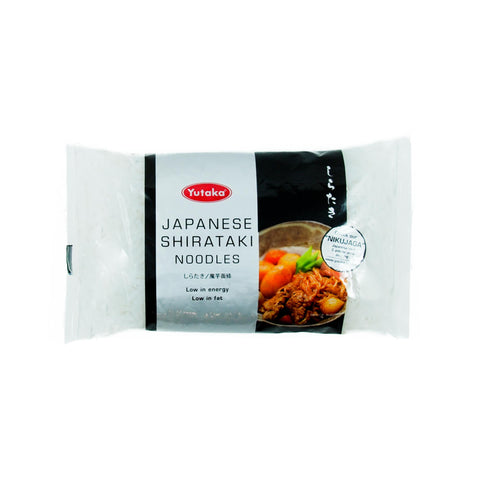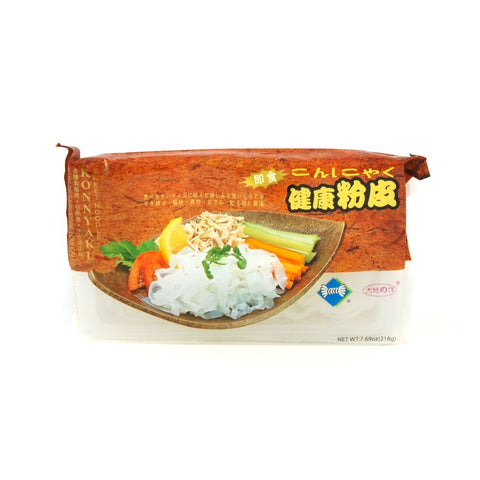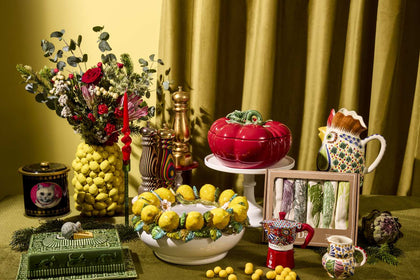The Ultimate Guide To Shirataki Noodles
by Ellie Edwards

Shirataki noodles (aka miracle noodles) are known for being free from almost all calories, protein and fat. With our ultimate guide to this popular Japanese food, you’ll discover what they’re made from, how to cook them and what makes them different to other noodles.
What are shirataki noodles?
Shirataki noodles are made from the konjac vegetable (also called ‘konnyaku’). This fibrous root vegetable is peeled, cooked, pounded, coagulated and then squeezed into noodle shapes.
Rather than using wheat flour (the key ingredient in soba, udon and ramen noodles), konjac is used for shirataki noodles.
Shirataki translates as ‘white waterfall’, which perfectly describes the clear nature of these noodles.
Are shirataki noodles healthy?
Yes, shirataki noodles are healthy! They’re typically 3% konjac and 97% water. This means shirataki noodles are suitable for vegans and people with a gluten intolerance. Those following the keto diet (which calls for low-carbohydrate foods) can also enjoy shirataki noodles.
Shirataki noodles are often referred to as ‘zero calorie noodles’, because they only contain seven calories per 100g. But it is worth noting that, while shirataki noodles are low in macronutrients, they are also low in vital micronutrients (including vitamins).
Do shirataki noodles taste good?
When eaten alone, shirataki noodles have quite a plain flavour. After all, they are 97% water!
They have a chewy texture, and are best added to a fragrant broth or rich miso soup. If you do want to eat the noodles straight, mix a little dressing of soy sauce, mirin and ginger to pour over. It will give your noodles a fiery lift.
How do you cook shirataki noodles?
Shirataki noodles can be enjoyed cold. They come packaged in water, so need to be drained and rinsed first before eating. If you do want to cook shirataki noodles, simply simmer for a few minutes until warmed through.
We’ve got three shirataki noodle packs to choose from, including thin, flat and nest versions.
As well as ‘zero calorie’ and ‘miracle’, shirataki noodles are also called yam noodles – or sometimes just konjac noodles. Each packet of these classic shirataki noodles serves one.
3 recipes using shirataki noodles
Shirataki noodles are typically added to a Chinese hot pot and eaten alongside a simmering broth with meat and vegetables. Here are three more exciting ways to enjoy these miracle noodles...
Thai Panang Curry Shirataki Noodle Recipe

This fragrant curry pairs coconutty chicken with shirataki noodles for an easy, low-calorie dinner. It’s packed with punchy lemongrass, galangal, kaffir lime and chilli, and because a pre-made curry paste is used, this recipe can be on the table in 20 minutes. Click here for the recipe.
Vietnamese Pho With Shirataki Noodle Nests Recipe

Traditionally, pho is a healthy dish made up of an aromatic broth, fragrant herbs and lean meat. Adding shirataki noodles to the mix makes it even healthier, plus they’ll soak up all those star anise and clove flavours. Try the recipe for yourself!
Umami-Rich Chicken Shirataki Noodle Soup Recipe

Our umami-rich chicken noodle soup is inspired by the flavours of a Chinese hot pot, with smoky, spicy and slightly acidic notes. We’ve added bok choi for crunchy texture. See the full recipe here.

About the author
Ellie Edwards is a food writer for Sous Chef. Previously she worked at olive magazine, writing about exciting new ingredients, UK restaurants and travelling the world to find the best cinnamon buns. When she's not exploring the likes of Belize, Kerala and Zanzibar, Ellie loves rustling up a feast in her London kitchen, with a particular passion for porridge, sourdough and negronis.




